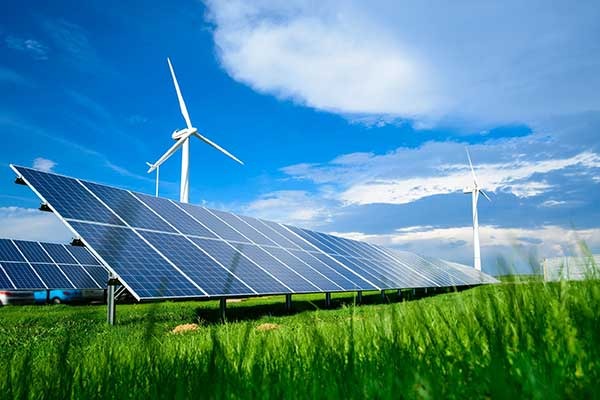ISLAMABAD: Pakistan has great potential to produce renewable energy through public-private partnerships, which will reduce dependence on fossil fuels and assist in decreasing the circular debt and emissions of greenhouse gases.
Irfan Ahmed, Independent Director HESCO (Hyderabad Electric Supply Company) and Adviser Energy Update, told WealthPK that Pakistan has significant potential to produce solar and wind energy. He said Pakistan can produce 2 million megawatts of energy from solar and 0.4 million MW from wind. Until now, he pointed out that wind and solar have only been used for 2 gigawatts and 0.8 gigawatts, respectively.
Irfan added that the installed capacity to provide energy is 34,000MW which is less compared to the true potential.
He said per capita electricity consumption in Pakistan is one-fifth of the world average. “But at the same time, energy wastage is three times the world average,” he pointed out.
“Sustainable policies are needed to precisely predict what demand will be in a country and how much renewable energy will be connected to the grid,” Irfan said.
He said the government and private sector should work together to unlock the potential of renewable energy. He said the government should set policies and be consistent about them by setting a roadmap in terms of renewable energy demand for the private sector. After that, he said, the private sector must be encouraged to step up.
“Had more and more energy demand been met by renewable sources; we would need less imported fuel. In addition, the emission of toxic material from greenhouse gases would have decreased,” the HESCO official said.
Data from the Oil Companies Advisory Council (OCAC) shows that Pakistan imported 1,542,715 million tons of oil in July 2022. Oil is primarily used in the transport and power sectors. The transport sector consumed 64% and the power sector consumed 25% of the total imported oil in the first month of FY23.
According to the Pakistan Bureau of Statistics (PBS), Pakistan imported $1.436 billion worth of petroleum products in July 2022.
Irfan said the problem being faced by the energy sector is mounting circular debt which has reached trillions of rupees. He added that the distribution losses during the supply chain is a major disruption being faced by the energy sector.
According to WealthPK research, circular debt in Pakistan has reached Rs2.253 trillion.
Irfan said the Competitive Trading Bilateral Contract Market (CTBCM) is the fundamental model that could help in solving the problems being faced by the energy sector. He said local and foreign investment should be deployed to solve the fundamental issue of distribution losses. He said policymakers should address those policies that are in favour of their people, and provide energy equity to the whole nation.
A report of the Sustainable Development Policy Institute (SDPI) shows that improving competitiveness, ambitious targets, and policy support are putting renewable power on course for new highs in Pakistan. The growth of renewable capacity (wind, solar, and bagasse) is forecasted to accelerate in the next eight years, with the total generation capacity to be increased from 2,949MW to 13,686MW by 2030, it added.
The report highlighted that additions of renewable energy capacity in power systems are on a slow track in 2020-21. An additional renewable power of 200MW solar and 750MW wind has been commissioned (added) this year (in 2022), which is 50% and 60.72% higher than 2019-20.
The report pointed out that policy and regulatory uncertainty around renewables, coupled with a lack of coordination mechanisms among the federal and provincial authorities, lead to slow progress in the transition towards renewables.
The report said the critical barrier is a lack of adequate financing for renewable energy projects, particularly for small-scale projects. The corporate sector should move forward and invest in renewable energy, it added.






